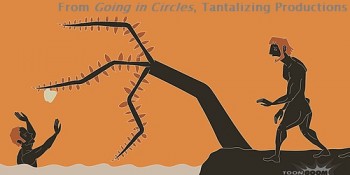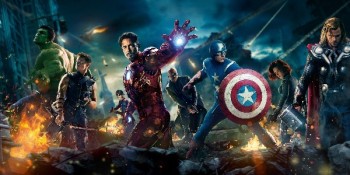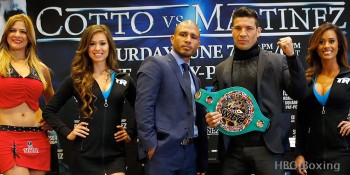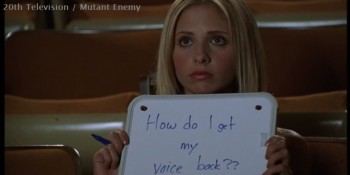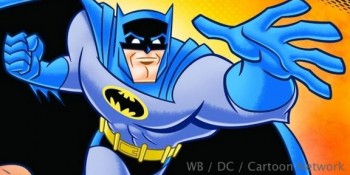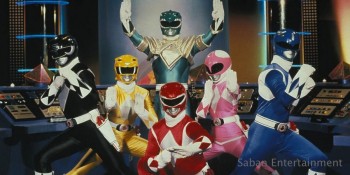By the gods, do I ever love ice cream. I would be eating ice cream right now if I had some. It’s like, 80 degrees in my house because I’m cheap when it comes to my electric bill, and it’s a struggle for me not to buy and consume the delicious, delicious foodstuff on a daily, if not hourly, basis during these warm months. Maybe you can relate.
But it’s not just ice cream either. There are a spate (spate, I say!) of frozen yogurt shops springing up all over the place, and you’d be remiss not to visit Rita’s for Italian ice once or twice this summer. Perhaps the elusive ice cream truck will stop by with its merry song, delivering frozen dairy product to your front door.
Where do we get all these tasty desserts, and how do they differ from each other?
Ice cream, of course, is best during warm weather, but modern refrigeration techniques (vapor compression) have only been in use since the mid-1800s. How did the people get their refreshing cold desserts before that? The Persian empire would save snow in a domed building called a yakhchal (“ice pit”), in which evaporating water kept the temperature cool. If a city was close enough to a mountain, citizens could also send runners to the higher elevations and fetch fresh snow. They would pour grape juice on the snow and eat it. Just like mom used to make.
Around 200 B.C., the Chinese first used an ice cream-making device that looks like the kind of thing you can buy at Walmart today: a container that gets dunked in snow and salt, to lower the freezing point of the water, then sloshed around until the milk and rice have frozen inside. This was pretty much standard practice for the next 2,000 years.
More recently, ice cream became more accessible and popular along with the onset of refrigeration, and the ice cream sundae (a respelling of “Sunday,” due to religious deference?) made its appearance in the late 19th century. Shortly thereafter, the ice cream cone, the soda fountain/ice cream parlor, and soft serve ice cream (in which air is mixed in to make the product lighter and allow it to move through a spigot) came along.
Aside from straight-up ice cream, we also have frozen custard, frozen yogurt, gelato, sorbet/Italian ice, and sherbet. The fab five?
Custard was invented in 1919 by the Kohr brothers, who basically beat egg yolk into the ice cream to keep it cold longer for afternoons on the Coney Island boardwalk.
Yogurt (Turkish, “to be curdled”), of course, is a deeply storied food, stretching back at least four millennia in India and the Middle East. It’s made by introducing bacteria cultures to milk. The bacteria ferments the lactose into lactic acid (like when milk curds but … tastier), which makes it squishy and sour. The frozen variety was introduced in 1970, but only really came into its own with TCBY (The Country’s Best Yogurt) in 1981. Froyo went through a low in the late 90s (probably because marketing suggested a different Ice Cream of the Future) but has been coming back strong in the last few years. Though typically, when I go to a frogurt place, I pour just a little bit of yogurt and add like 500 pounds of toppings.
Gelato is from Latin gelatus (“frozen”). In the United States, there’s no specific differentiation between gelato and ice cream, although ice cream has to have a certain amount of milk fat (10 percent — less than that and you have to call it a “frozen dairy product”). Gelato, on the other hand, can be anything, though it is typically airy and highly fatty. Like I like my … men?
Sorbet and sherbet share the same root: Arabic sharbat (“a drink”). They are different things, though! At least in America, sorbet and Italian ice (or water ice) contain no dairy products, just frozen fruit juice, making it sweeter and giving it that sort of flaky consistency. Sherbet (also sometimes called sherbert, a recurring character in the Dilbert comic strip notreally) has 1 to 2 percent milk fat, which cuts the fruity sweetness and makes it scoop up more like ice cream.
So now that we’re caught up on mortal desserts, let’s see what the gods are slurping down in the heat. Contrary to what you might think, they aren’t all immortal just because. No, they get longevity from tasty treats, which is sort of the opposite of how we work in the mortal realm. For instance, the Greek gods would chow down on nectar (Proto-Indo-European: nek, “death”; tar, “overcoming”) and ambrosia (Indo-European n-mer-to: mer, “to not die”; to, “being”).
Now, the gods are typically quite possessive about their grub. When Tantalus (root of our “tantalize”), a mortal king, ate at the gods’ table, he sneaked a bit of ambrosia into his doggy bag and took off. The gods punished him by locking him in the nether regions of Hades, where he couldn’t reach the fruit hanging over his head or the water below him, forever yearning and never being able to sate his hunger and thirst. Well, they did that either because he stole their fruit punch or because he carved up his own son into a pie and tried to feed him to the gods for brunch one time. Hard to say.
It’s not just the Greek gods who get immortality from their desserts. The Hindu angelic devas had to recover their longevity after a curse was placed on them. They convinced the demonic asura to help out, promising half of the life-giving, milky amrita (same root as “ambrosia”). After churning the ocean, using a giant snake king and a mountain, the devas got their juice and left the demons poisoned by the snake king’s toxic breath, unable to reap the benefits after all. Sneaky buggers.
The Norse gods, too, needed snacks to keep up their lifespans. In their case, the goddess Iðunn (“ever young”) tended apples that reversed aging in those who ate them. At one point, the giant bird Þjazi, a jötunn and enemy of the gods, coerced Loki into luring Iðunn away from her orchard in search of interesting apples, and Þjazi kidnapped her. The other gods started to age and wither, and they forced Loki (who just gets pushed around a lot in this story) to get her back. Loki transformed into a falcon and flew to where Iðunn was kept and turned her into a nut, which he could carry on his back, and flew her home. Hooray for ambiguously heroic/villainous trickster gods!
So whether you’re chilling out this summer with ice cream, frogurt, or immortality-granting produce, remember that you won’t win the gods’ favor by trying to feed them your progeny. Cheers, and we’ll see you next week!
